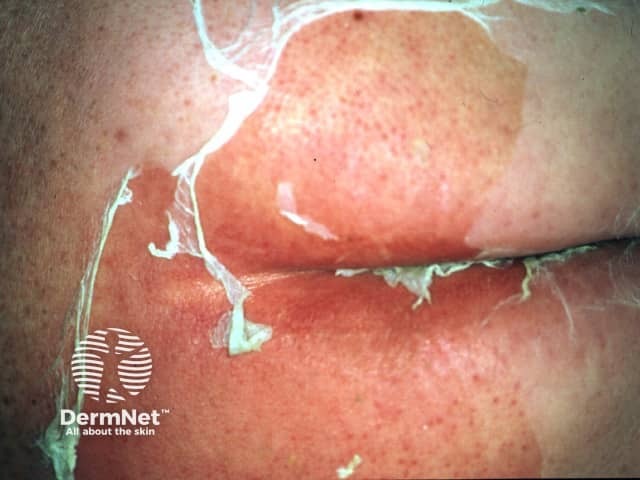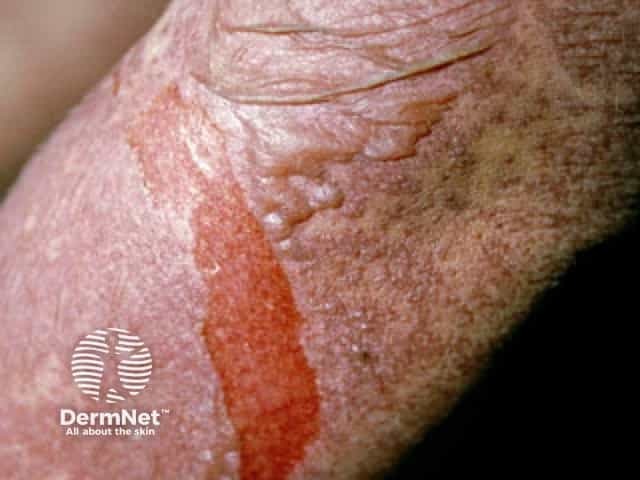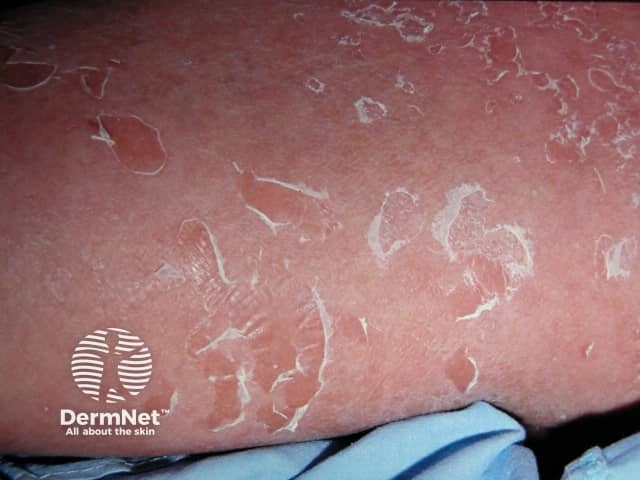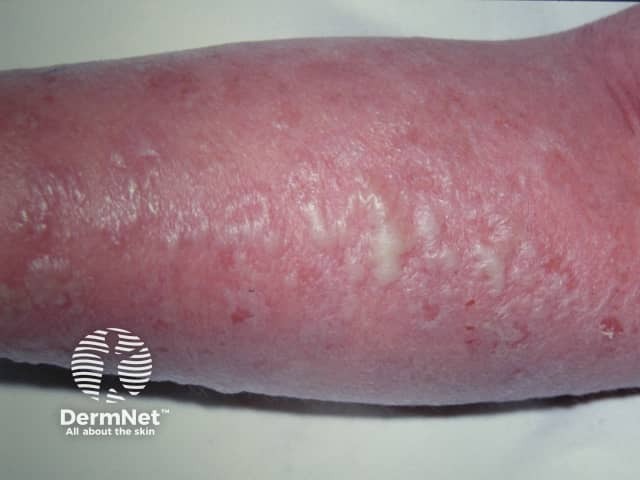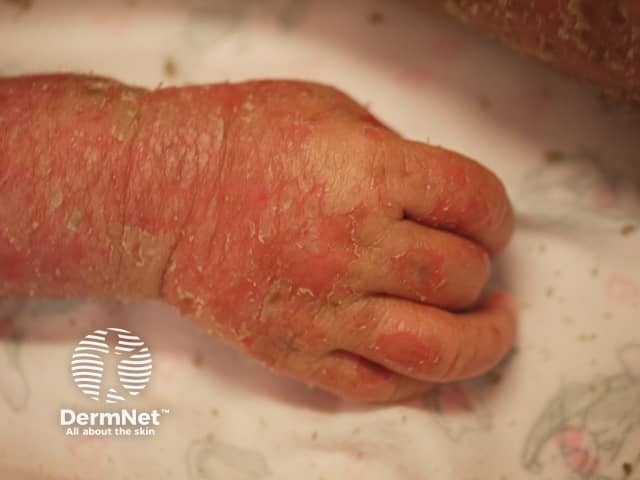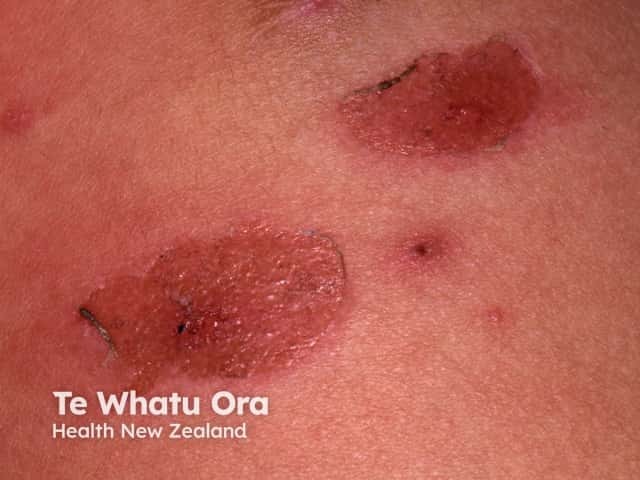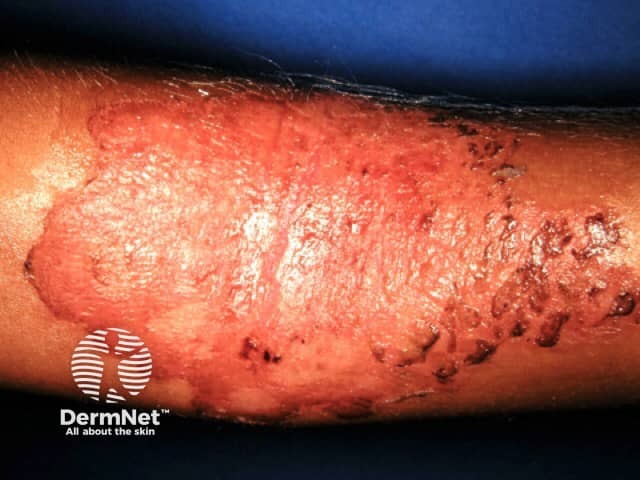Main menu
Common skin conditions

NEWS
Join DermNet PRO
Read more
Quick links
Staphylococcal scalded skin syndrome images
Go to the staphylococcal scalded skin syndrome topic page
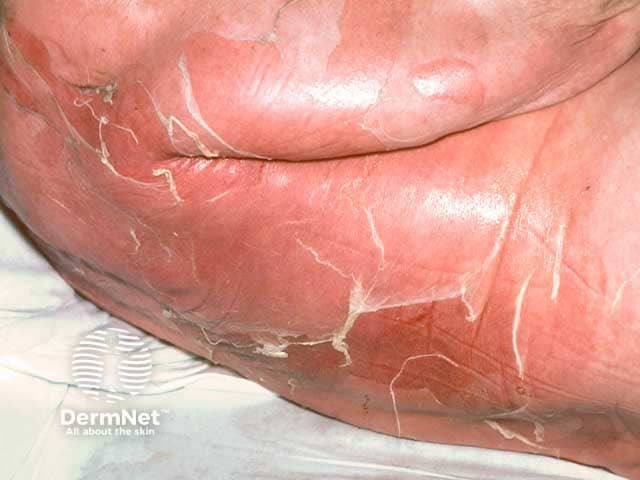
A post-operative Staphylococcal wound infection was followed by this eruption - widespread partial thickess epidermal necrosis with normal mucous membranes due to staphylococcal scalded skin syndrome
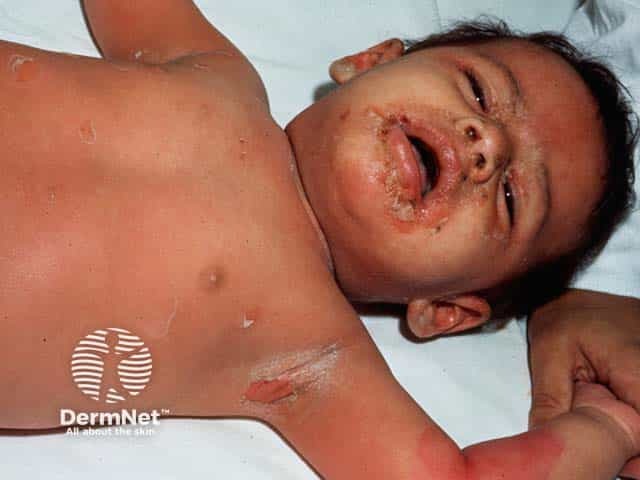
Superficial blistering over the axillae, face and chest due to staphylococcal scalded skin sydrome (SSSS-patient1)
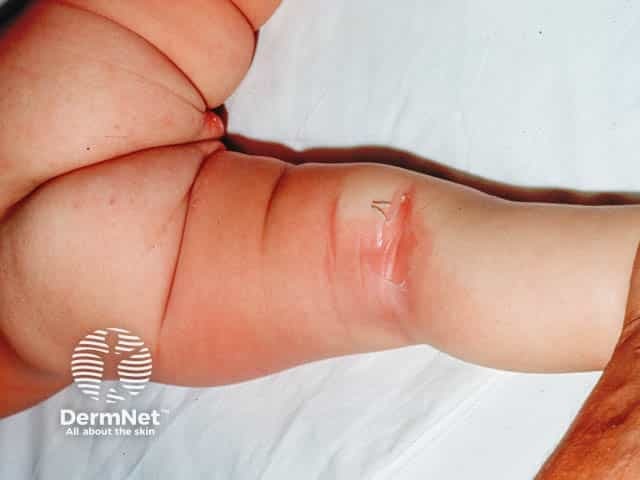
Staphylococcal scalded skin in the popliteal fossa (SSSS-patient1)
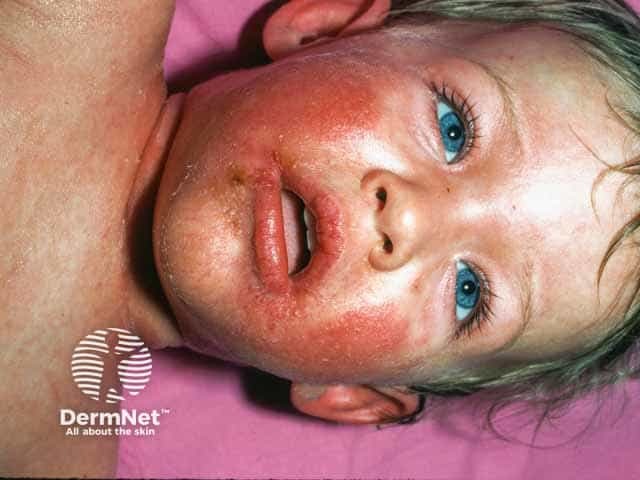
Erythema, scaling and crusting in an infant with staphylococcal scalded skin syndrome (SSSS-patient2)
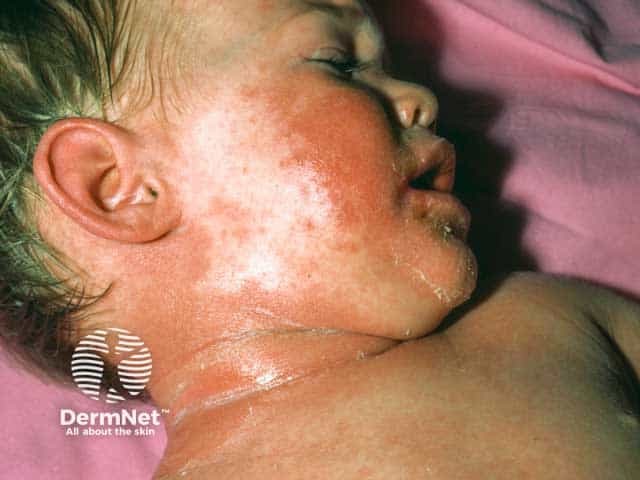
Erythema, scaling and crusting in an infant with staphylococcal scalded skin syndrome (SSSS-patient2)
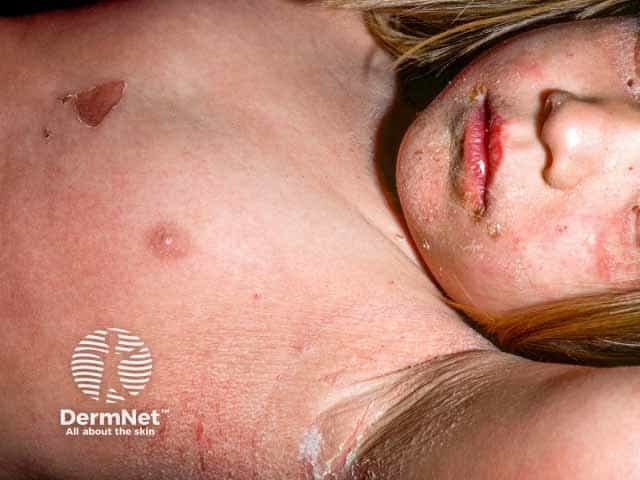
Widespread erythema with areas of erosion on the chest in staphylococcal scaled skin syndrome (SSSS-patient3)
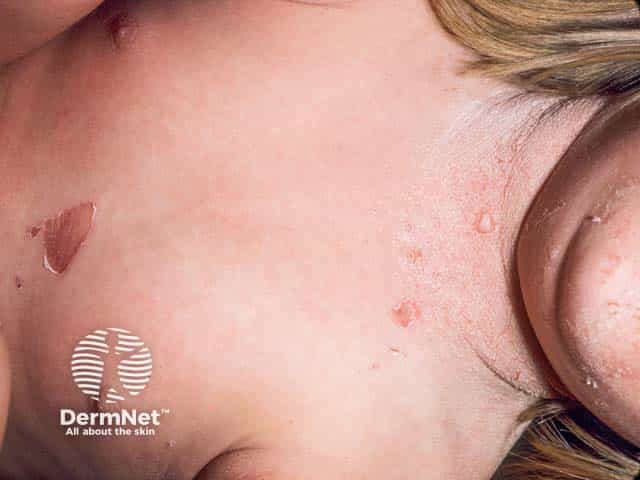
Widespread erythema with areas of erosion on the chest in staphylococcal scaled skin syndrome (SSSS-patient3)
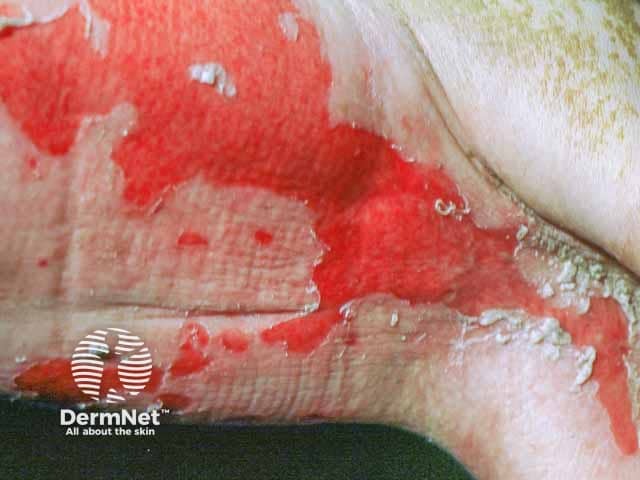
Axillary erosions in adult staphylococcal skin disease (SSSS-patient4)
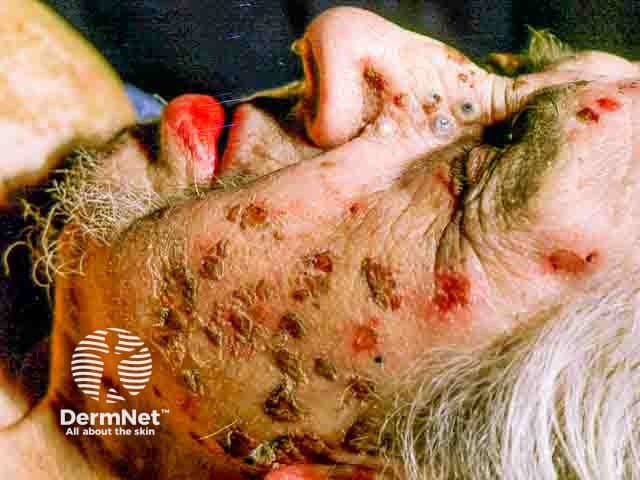
Blisters, crusts and erosions in adult staphylococcal skin disease (SSSS-patient4)
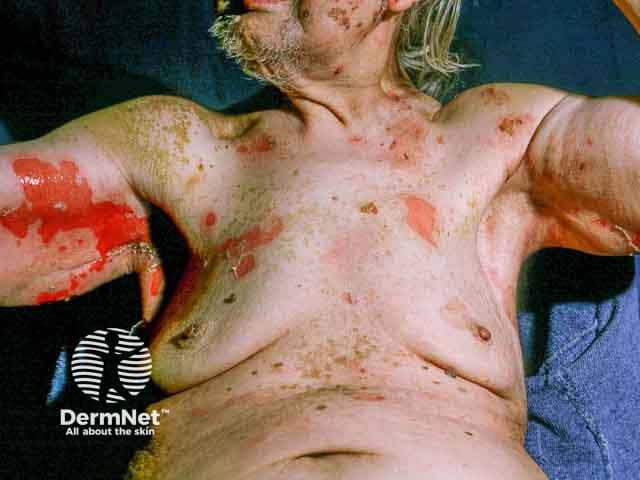
Superficial blistering and erosions in adult staphylococcal skin syndrome (SSSS-patient4)
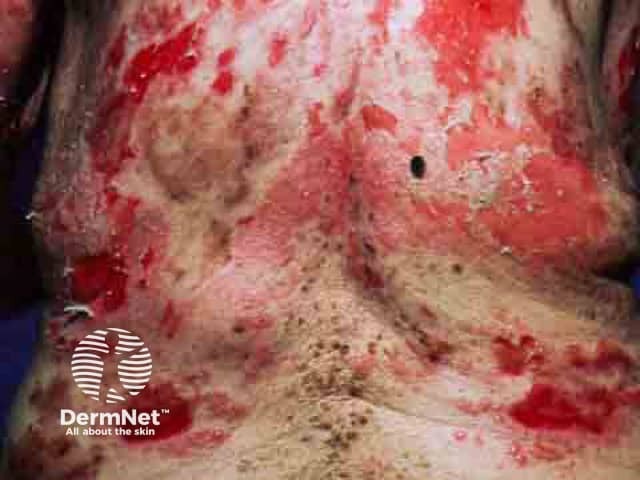
Blisters and erosions in adult staphylococcal skin disease (SSSS-patient4)
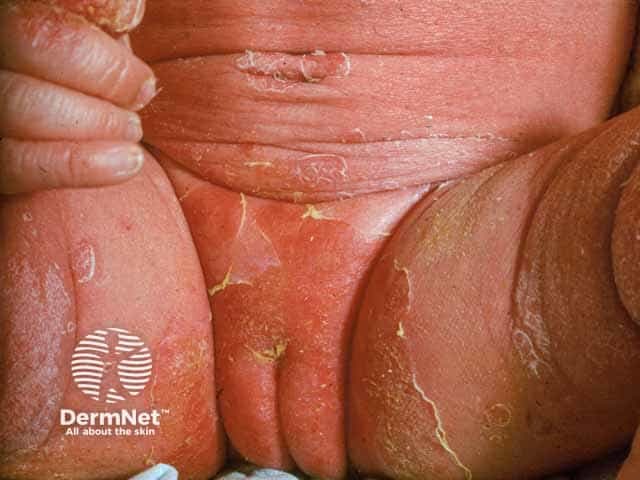
Erythema and peeling of the epidermis in staphylococcal scalded skin syndrome (SSSS-patient5)
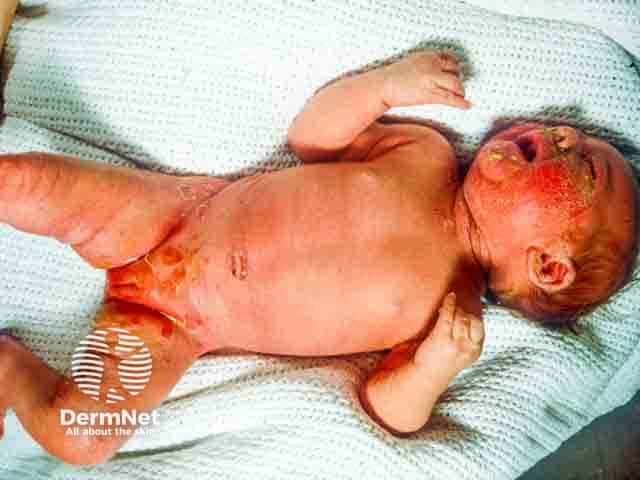
Superficial erosions in the napkin area and widespread erythema in staphylococcal scalded skin syndrome (SSSS-patient5)
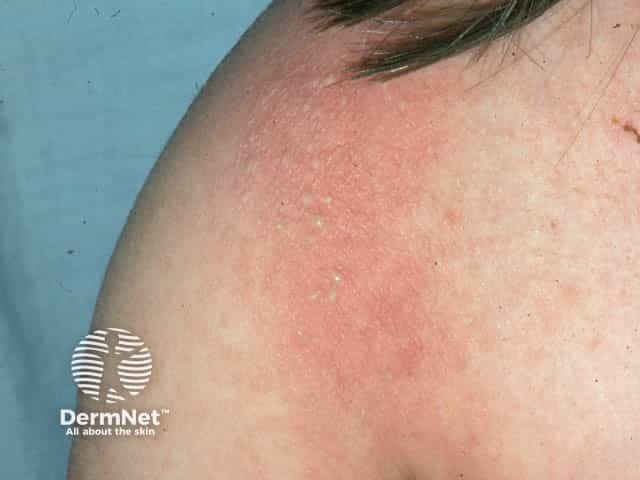
Superfical epidermal blisters in early staphylococcal scalded skin syndrome (SSSS-patient6)
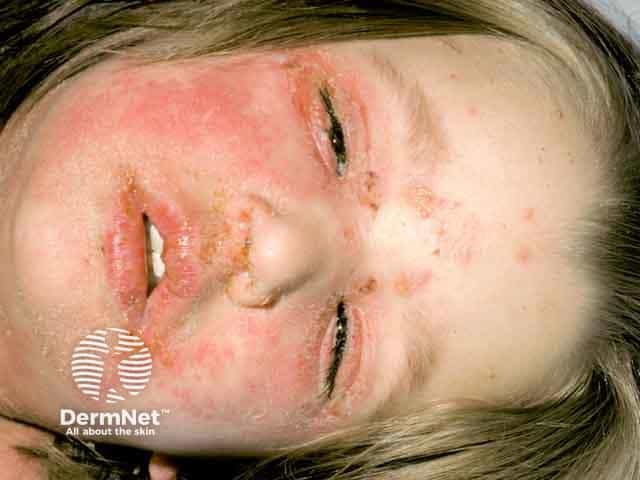
Erythema and crusting on the face in staphylococcal scalded skin syndrome (SSSS-patient6)
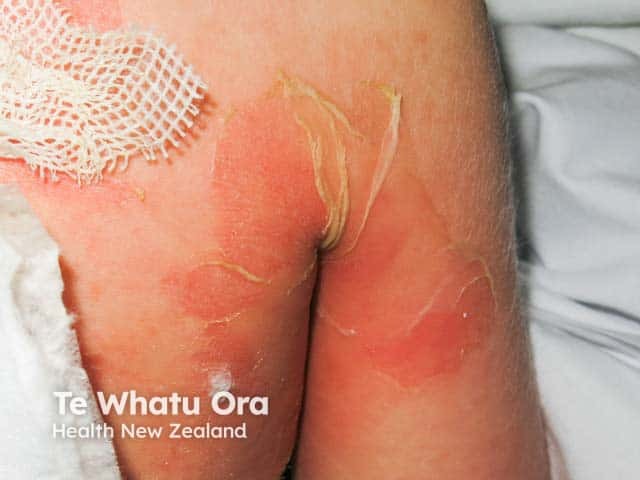
Erythema and wrinkling of the necrotic epidermis in staphylococcal scalded skin syndrome
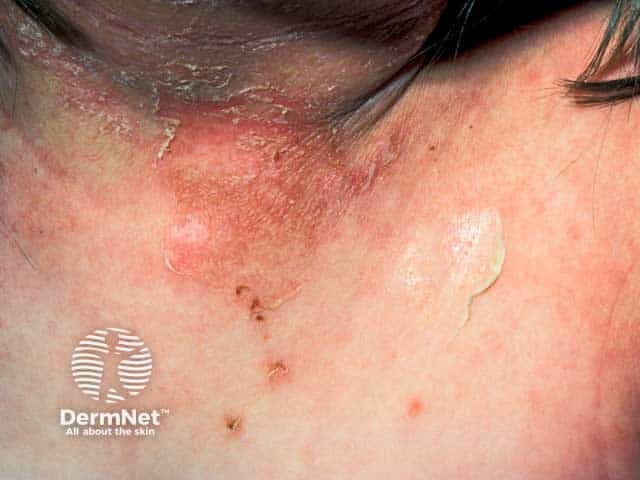
Erythema and wrinkling of the necrotic epidermis in staphylococcal scalded skin syndrome
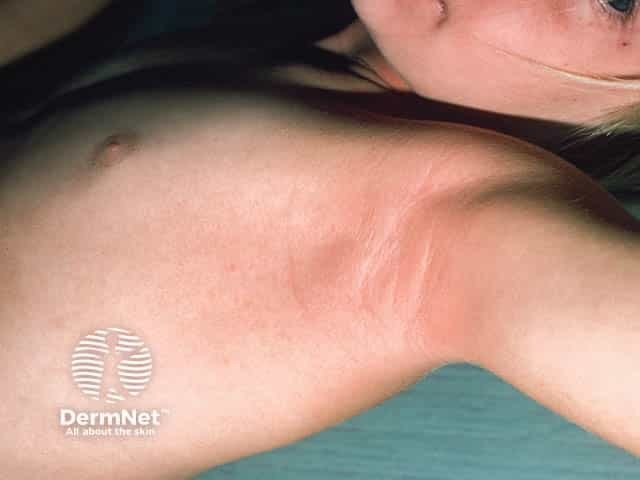
Erythema prior to blistering in staphylococcal scalded skin syndrome
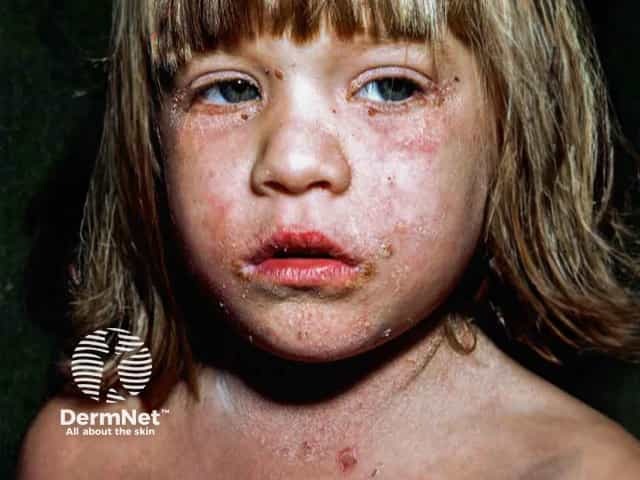
Erythema, scaling and crusting in a child with staphylococcal scalded skin syndrome
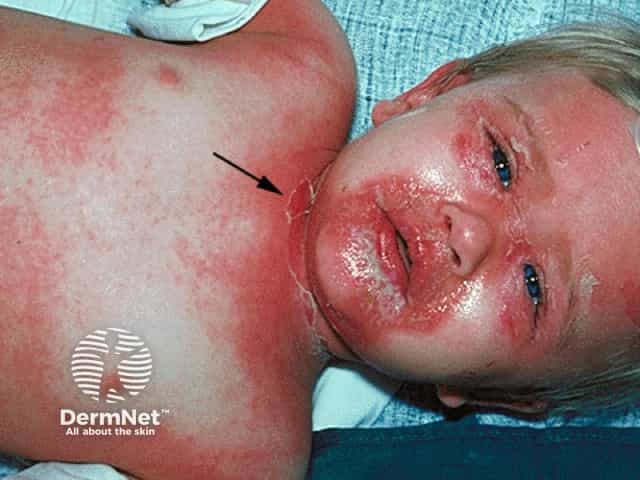
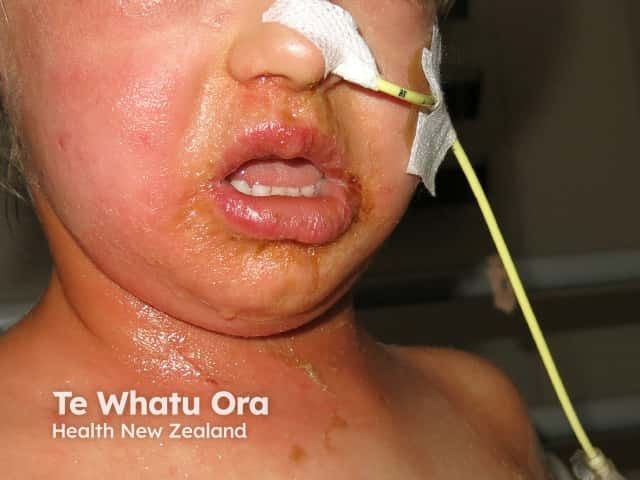
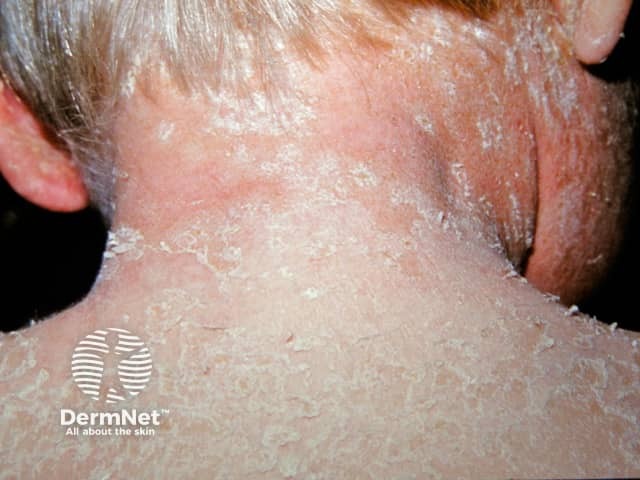
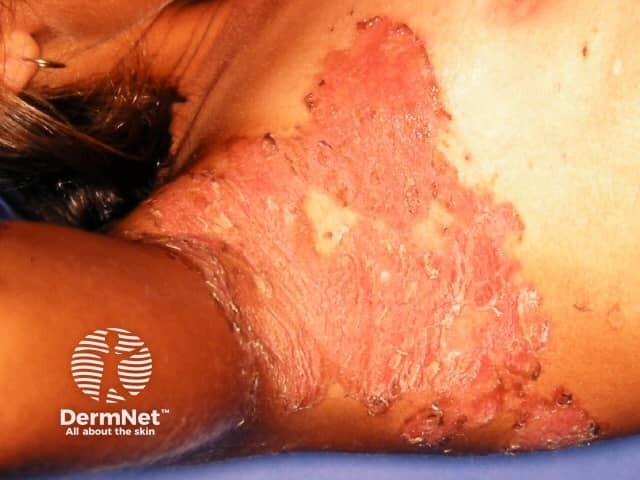
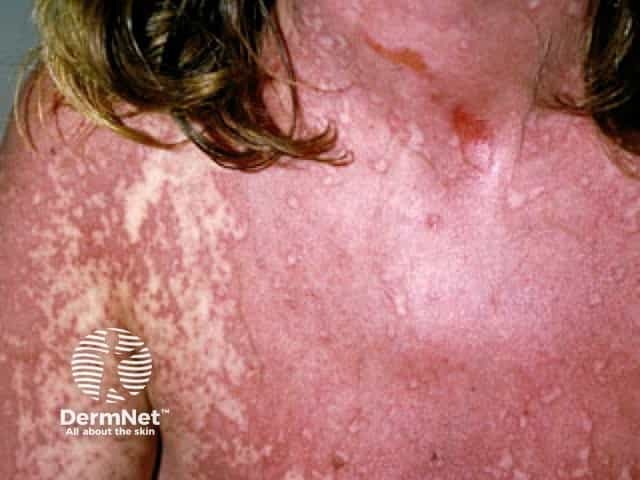
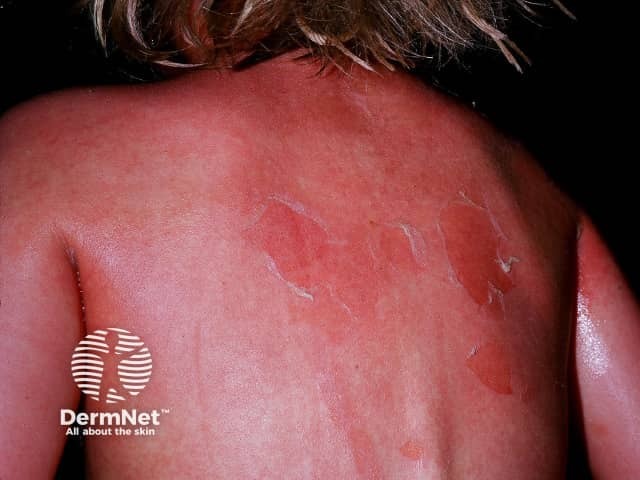
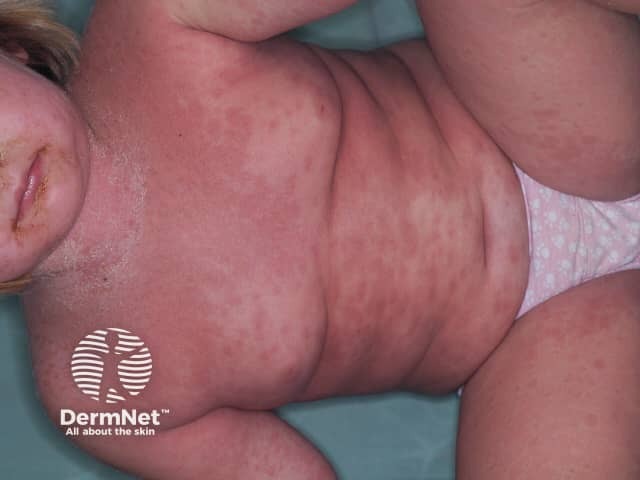
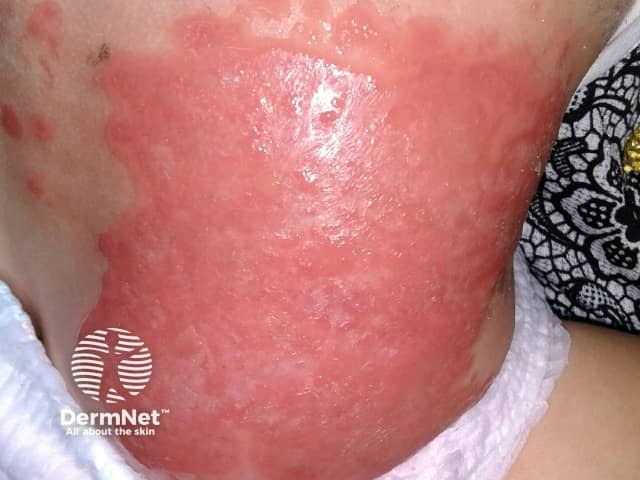
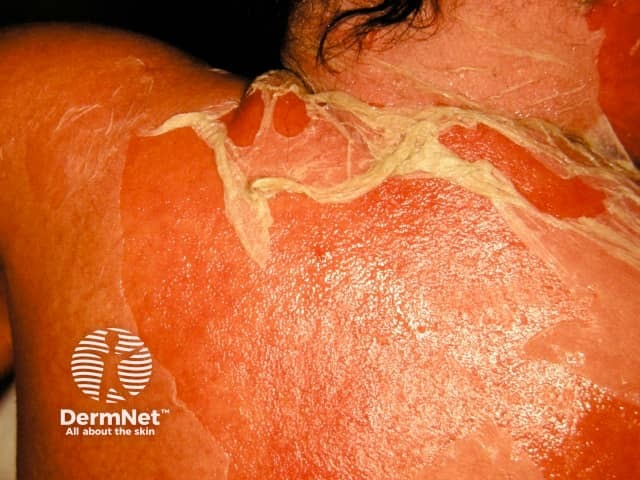
Staphylococcal scalded skin syndrome
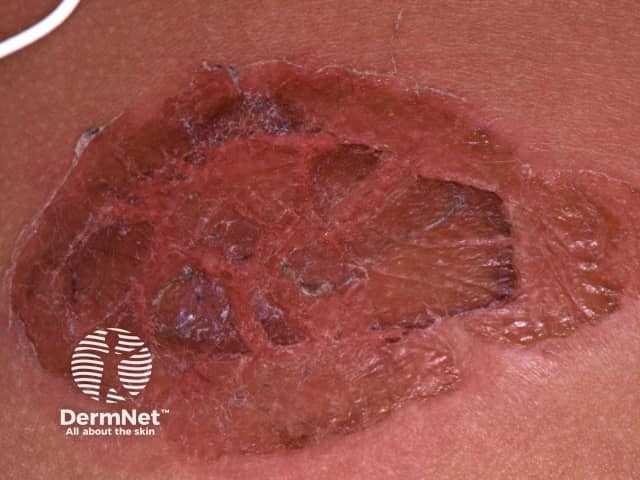
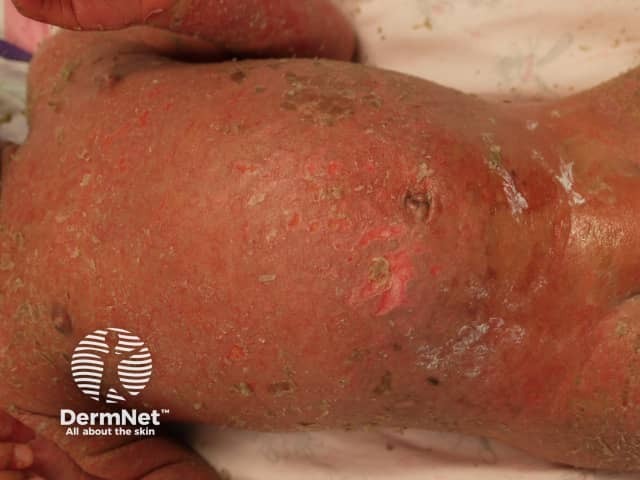
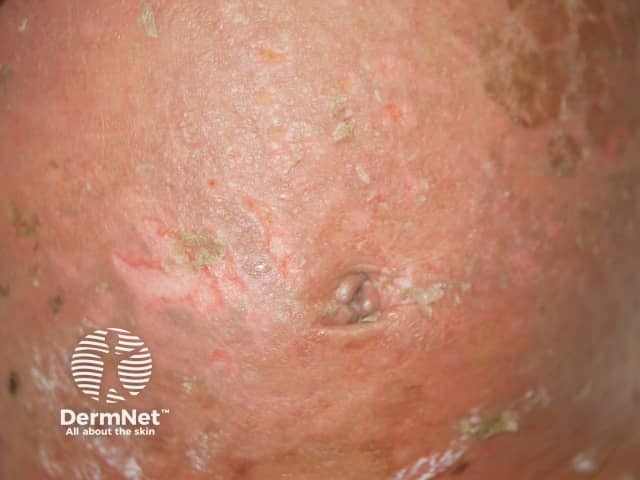
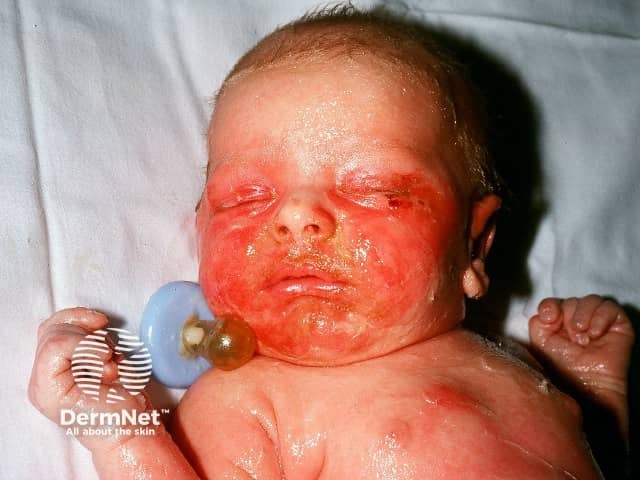
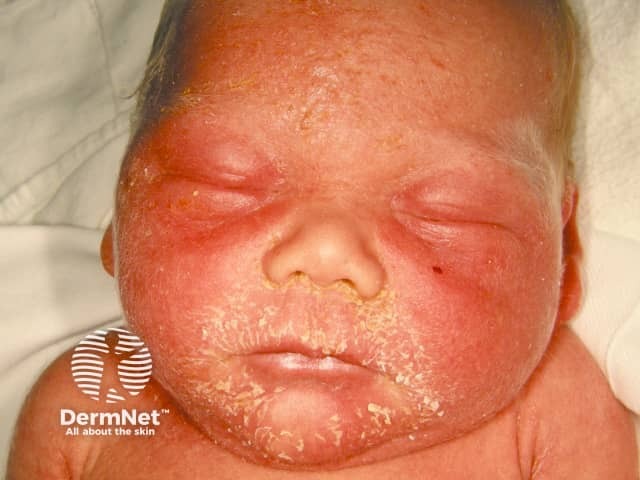
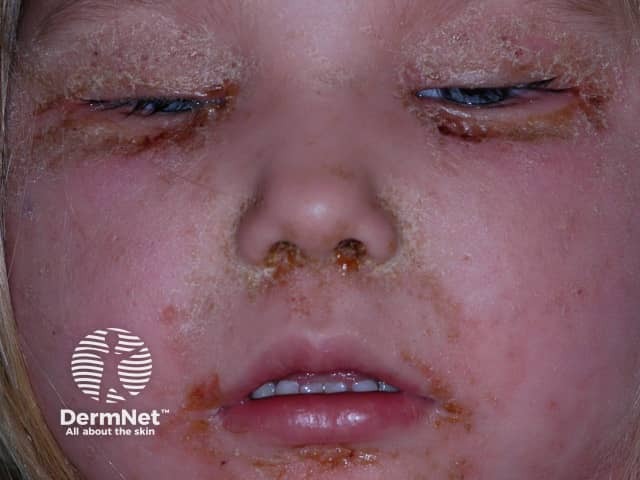
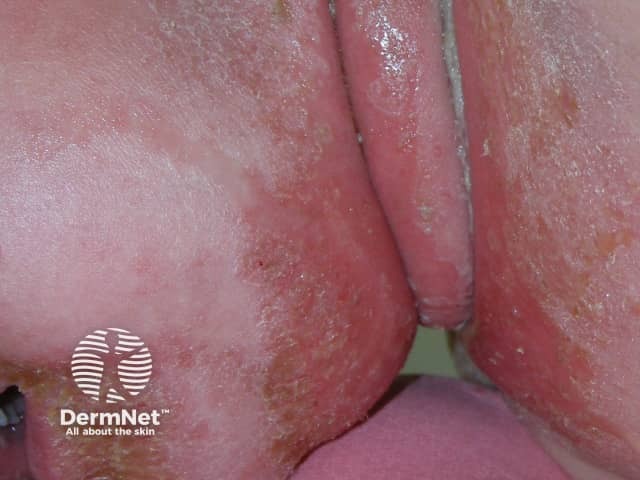
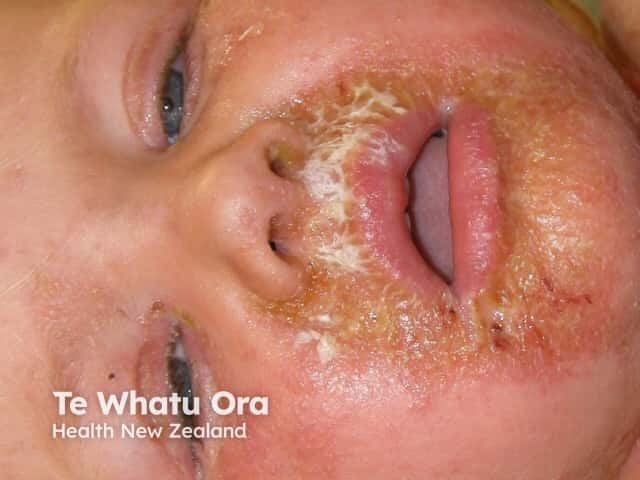
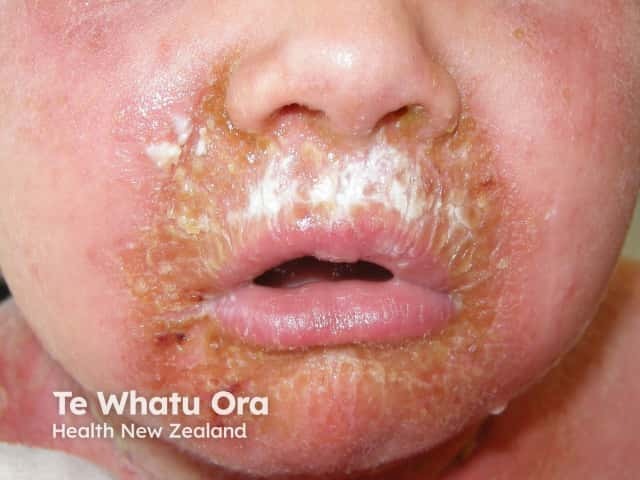
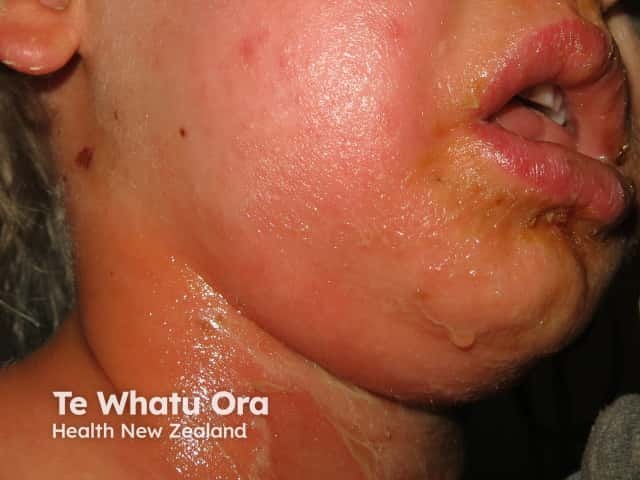
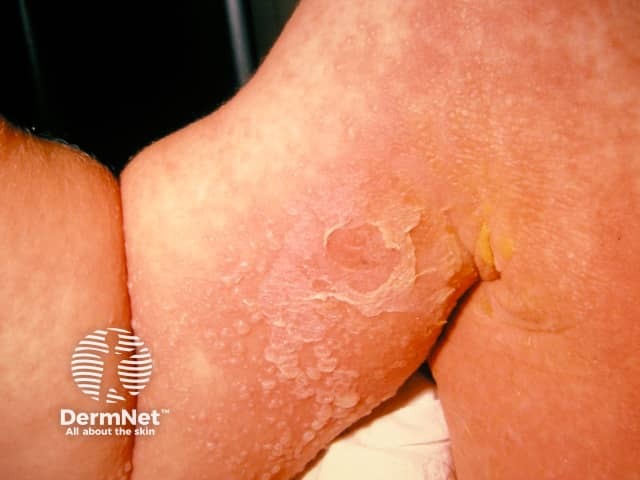
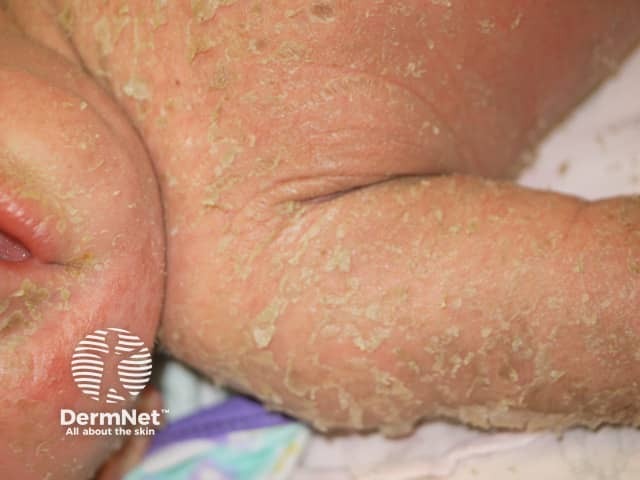
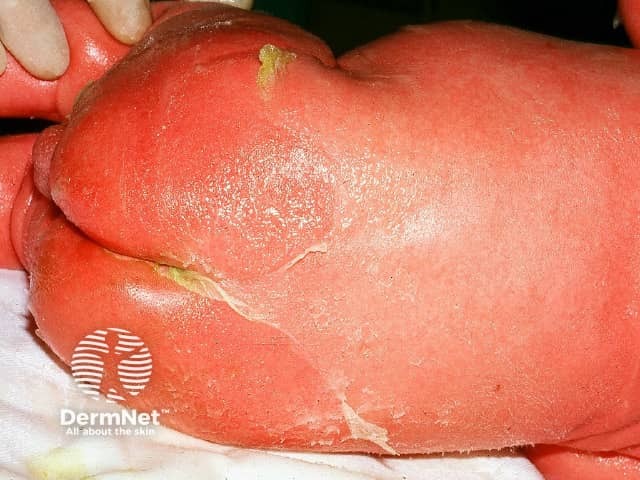
Staphylococcal scalded skin syndrome
